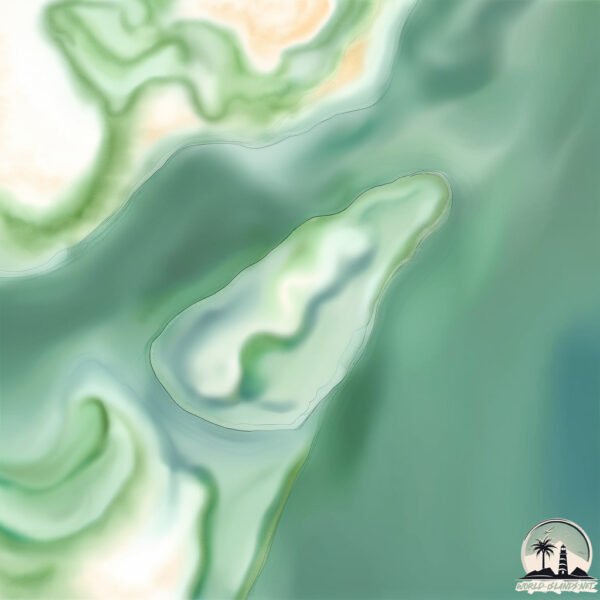Welcome to Ilha São Rica , a Tropical island in the South Atlantic Ocean, part of the majestic Atlantic Ocean. This guide offers a comprehensive overview of what makes Ilha São Rica unique – from its geography and climate to its population, infrastructure, and beyond. Dive into the details:
Geography and size of Ilha São Rica
Size: 0.148 km²Coastline: 1.7 kmOcean: Atlantic OceanSea: South Atlantic OceanContinent: South America
Ilha São Rica is a Tiny Island spanning 0.148 km² with a coastline of 1.7 km.
Archipel: –
Tectonic Plate: South America – A major plate covering the South American continent and part of the Atlantic Ocean, known for the Andes mountain range and significant seismic and volcanic activity.
The geographic heart of the island is pinpointed at these coordinates:
Climate and weather of Ilha São Rica
Climate Zone: TropicalClimate Details: Tropical Savanna, WetTemperature: Hot
Climate Characteristics: Defined by distinct wet and dry seasons with high temperatures year-round. Pronounced rainfall occurs during the wet season, while the dry season is marked by drought.
Topography and nature of Ilha São Rica
Timezone: UTC-03:00Timezone places: America/Sao_PauloMax. Elevation: 5 m Mean Elevation: 2 mVegetation: Evergreen Broadleaf ForestTree Coverage: 12%
The mean elevation is 2 m. The highest elevation on the island reaches approximately 5 meters above sea level. The island is characterized by Plains: Flat, low-lying lands characterized by a maximum elevation of up to 200 meters. On islands, plains are typically coastal lowlands or central flat areas.
Dominating Vegetation: Evergreen Broadleaf Forest
Vegetation: 4 vegetation zones – Diverse Island
Infrastructure and Travelling to Ilha São Rica
Does the island have a public airport? no .
Does the island have a major port? no .
The mean population of Ilha São Rica is 645 per km². Ilha São Rica is Densely Populated. The island belongs to Brazil .
Continuing your journey, Ilha Santa Rita is the next notable island, situated merely km away.
a ILHA mais PERIGOSA do MUNDO
A Ilha Sentinela do Norte é conhecida como a ilha mais perigosa que existe, e a razão é o comportamento do povo que a habita: ...
a ILHA mais PERIGOSA do MUNDO
A Ilha Sentinela do Norte é conhecida como a ilha mais perigosa que ...
A Ilha Sentinela do Norte é conhecida como a ilha mais perigosa que existe, e a razão é o comportamento do povo que a habita: ...
O Mais Novo Vizinho Rico do Brasil? (Ilhas Falkland/Malvinas)
Em 2019 a Latam lançou um voo direto de São Paulo às Ilhas Falkland ...
Em 2019 a Latam lançou um voo direto de São Paulo às Ilhas Falkland (Malvinas), abrindo as portas para o turismo brasileiro ...
Tortuga Island Cruise | One Day Tour | Bay Island Cruises | Costa Rica
Get $10 off your tour! Click the link below to get the discount and ...
Get $10 off your tour! Click the link below to get the discount and read more about the Tortuga Island 1 day cruise! Tortuga Island ...
Brazil is classified as Emerging region: BRIC: Brazil, Russia, India, and China – Economies noted for their rapid growth and increasing influence on global affairs. The level of income is Upper middle income.
News – Latest Updates and Headlines from Ilha São Rica
Stay informed with the most recent news and important headlines from Ilha São Rica. Here’s a roundup of the latest developments.
Loading...
Please note: The data used here has been primarily extracted from satellite readings. Deviations from exact values may occur, particularly regarding the height of elevations and population density. Land area and coastline measurements refer to average values at mean high tide.

